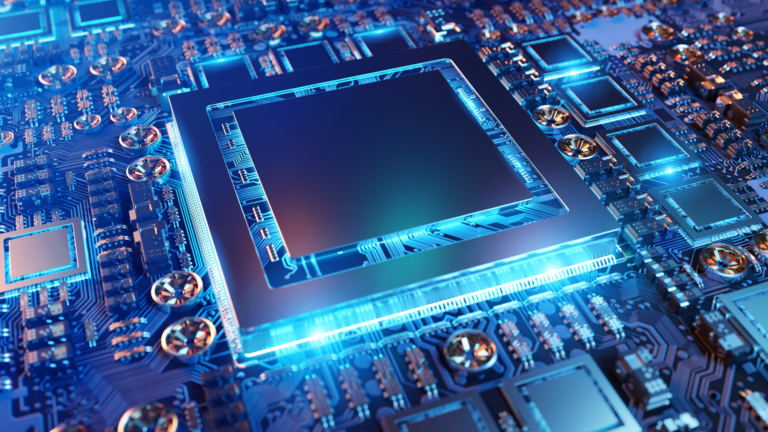Introduction On https://acortaz.eu/que-es-un-servidor-blade/
In the world of technology, the term “servidor blade” has gained significant attention due to its efficiency and performance. A servidor blade, also known as a blade server, is a compact, modular server that is designed to minimize physical space and energy consumption while https://acortaz.eu/que-es-un-servidor-blade/ maximizing computational power. This article will delve into the intricacies of what a servidor blade is, how it functions, its benefits, and its applications in various industries.
Understanding Servidor Blade
A servidor blade is a server chassis that houses multiple thin, modular circuit boards called blades. Each blade functions as an individual server unit with its own processors, memory, storage, and networking components. These blades are hot-swappable, meaning they can be easily inserted or removed from the chassis without disrupting the operation of other blades.
Components of a Servidor Blade
A typical servidor blade consists of a blade enclosure, power supplies, cooling fans, management modules, and https://acortaz.eu/que-es-un-servidor-blade/ the blade servers themselves. The blade enclosure provides the physical structure for housing the blades and ensures efficient airflow for cooling. Power supplies deliver electricity to the blades, while cooling fans prevent overheating. Management modules enable remote monitoring and control of the servidor blade system.
Advantages of Using Servidor Blades
Servidor blades offer several advantages over traditional rack-mounted servers. They are space-efficient, allowing organizations to maximize their server density in data centers. Blade servers also https://acortaz.eu/que-es-un-servidor-blade/ consume less power and generate less heat, leading to lower energy costs and improved cooling efficiency. Additionally, servidor blades are highly scalable, making it easy to expand server capacity as needed.
Applications of Servidor Blades
Servidor blades are commonly used in enterprise environments, cloud computing, virtualization, and high-performance computing applications. Their compact form factor and high-density design make them ideal for data centers with limited space. Blade servers are also well-suited for tasks that require high processing power, such as scientific research, financial modeling, and data analysis.
Scalability and Flexibility
One of the key advantages of servidor blades is their scalability and flexibility. Organizations can easily add or remove blades to meet changing workload demands without having to invest in additional infrastructure. This modular approach to server deployment https://acortaz.eu/que-es-un-servidor-blade/ allows for greater agility and resource optimization.
Management and Monitoring Capabilities
Servidor blade systems come equipped with advanced management and monitoring capabilities that enable administrators to oversee the health and performance of the servers remotely. These management tools provide real-time insights into server utilization, temperature, power consumption, and other critical metrics, allowing for https://acortaz.eu/que-es-un-servidor-blade/ proactive maintenance and troubleshooting.
Cost Considerations
While servidor blades offer numerous benefits, they can be more expensive upfront compared to traditional servers. Organizations need to weigh the initial investment against the long-term savings in energy costs, space efficiency, and scalability. It is essential to conduct a thorough cost-benefit analysis to determine the most cost-effective server solution for the organization’s needs.
Security and Redundancy Features
Servidor blades often come equipped with built-in security features such as encryption, access controls, https://acortaz.eu/que-es-un-servidor-blade/ and intrusion detection mechanisms to safeguard sensitive data and prevent unauthorized access. Additionally, blade servers can be configured with redundant components, such as power supplies and network connections, to ensure high availability and fault tolerance.
Future Trends in Servidor Blade Technology
As technology continues to evolve, servidor blade technology is expected to advance further with innovations in performance, energy efficiency, and integration with emerging technologies like artificial intelligence and edge computing. Organizations that embrace servidor blades can stay ahead of the curve and leverage the benefits of cutting-edge server technology.
FAQs On https://acortaz.eu/que-es-un-servidor-blade/
1. What are the key benefits of using servidor blades?
Servidor blades offer advantages such as space efficiency, energy savings, scalability, and high performance. These benefits make them an attractive option for organizations looking to optimize their server infrastructure.
2. How do servidor blades differ from traditional rack-mounted servers?
Servidor blades are compact, modular servers that are designed for high-density deployment, whereas traditional https://acortaz.eu/que-es-un-servidor-blade/ rack-mounted servers are standalone units that occupy more physical space. Blade servers are also more energy-efficient and scalable than rack-mounted servers.
3. Can servidor blades be customized to meet specific workload requirements?
Yes, servidor blades can be customized with different configurations of processors, memory, storage, and networking options to suit specific workload demands. This flexibility allows organizations to tailor their servidor blade systems to meet their unique requirements.
4. Are servidor blades suitable for small businesses?
While servidor blades are https://acortaz.eu/que-es-un-servidor-blade/ typically used in enterprise environments, small businesses can also benefit from their space-saving design and scalability. However, small businesses should carefully evaluate their server needs and budget constraints before investing in servidor blade technology.
5. How do servidor blades contribute to energy efficiency in data centers?
Servidor blades consume less power and generate less heat compared to traditional servers, leading to https://acortaz.eu/que-es-un-servidor-blade/ lower energy costs and reduced cooling requirements in data centers. This energy efficiency is achieved through the compact design and shared infrastructure of blade servers.
6. What are the considerations for implementing a servidor blade system?
Organizations considering implementing a servidor blade system should assess factors such as their current server infrastructure, workload requirements, budget constraints, and future scalability needs. It is essential to plan the deployment carefully to maximize the benefits of servidor blade technology.
7. How can organizations ensure the security of their servidor blade systems?
To enhance the security of servidor blade systems, organizations can implement measures such as encryption, access controls, regular security audits, and firmware updates. It is crucial to follow best practices for server security to protect sensitive data and prevent unauthorized access.
Conclusion On https://acortaz.eu/que-es-un-servidor-blade/
In conclusion, servidor blades offer a compact, energy-efficient, and scalable solution for organizations seeking to optimize their server infrastructure. With their modular design, advanced management capabilities, and future-ready technology, servidor blades are well-positioned to meet the evolving demands of modern data centers and high-performance computing environments. By understanding the benefits, https://acortaz.eu/que-es-un-servidor-blade/ applications, and considerations of servidor blades, organizations can make informed decisions about integrating this cutting-edge server technology into their IT infrastructure. Embracing servidor blades can pave the way for enhanced efficiency, flexibility, and performance in the digital age.
related term: https://acortaz.eu/que-es-un-servidor-blade/





